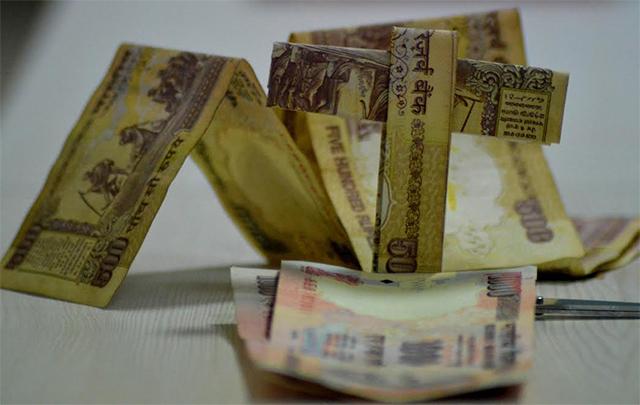Ever since Prime Minister Narendra Modi announced his government’s decision to scrap old currency notes of Rs 500 and Rs 1,000 on 8 November, opposition parties, and some of its own allies, have been at loggerheads with the ruling Bharatiya Janata Party (BJP), with some like the Mamata Banerjee led Trinamool Congress (TMC) and Arvind Kejriwal led Aam Aadmi Party (AAP) demanding an immediate rollback.
While political parties are tapping into a genuine sense of frustration among people, millions of whom are left with virtually no money to buy even essentials like food and medicines, what also hurts them is the fact that they may be left with virtually no resources to fight the upcoming elections in states like Uttar Pradesh, Punjab, and Goa.
How exactly do political parties raise funds to fight elections?
There is a huge degree of opacity surrounding the funding of political parties in the country. In a 2015 background paper on the subject, the Election Commission said that to fight polls, resources are “either raised by the parties or the candidates on their own, or are provided by way of state funding.†The report goes on to say that state funding is provided either directly or in an indirect manner. “Direct state funding is given to political parties and/or candidates in form of money, usually as bank transfer. Indirect state funding refers to transfer of resources by the state or the government to a political party or a candidate for a monetary value in indirect way,†it adds.
So, where does black money enter the game?
Untaxed wealth or black money is what drives political funding. The commission says that the high cost of funding elections and corruption “go hand in hand.†The commission further says that 'The Big Money’ used in non-transparent manner, “may be black money or tainted money†and it effectively makes “elected representatives become captive in the hands of those, who provide such funds.†Besides, “vote buying is another manifestation of such non-transparent use of money in elections,†it adds.
But how do political parties manage to hide their sources of funding?
Political parties are required to disclose donations only of amounts higher than Rs 20,000. However, they are neither required to maintain the details, nor required to disclose to the commission, if the one time contribution made by a person is not more than Rs 20,000. And, this is where the evade disclosures.
In fact, if one looks at the contribution reports submitted by national parties to the election commission, it becomes clear that they reveal very little. The contribution report of the Bahujan Samaj Party (BSP), which is a major political force in Uttar Pradesh and parts of Punjab, says that the party received no contributions above Rs 20,000 during 2015-16. Effectively, this means that the party’s entire funding is unaccounted for. Interestingly, the contribution report of the ruling BJP for 2015-16 is not available on the commission’s website. In 2014-15, the party had received just over Rs 166 crore in contributions above Rs 20,000.
Further, parties are also not required to disclose total contributions received by them and therefore anonymous donations are neither restricted nor prohibited. Similarly, if they receive a donation from the prohibited companies or source, there is no penal provision against such action by the parties.
What portion of their contribution is received in cash?
The truth is, we simply don’t know, although there are some credible estimates available. In a 2013 report, the Association for Democratic Reforms (ADR), a nonprofit organisation that tracks political funding put out some estimates from assembly elections in 2008. Although this data is undoubtedly dated, it is nonetheless instructive. The ADR report says that while the BSP received its entire contribution in cash, the figures respectively for the Indian National Congress (INC) and the BJP were 93.43% and 85.6%. Suffices to say that the picture will not have changed by much since 2008.
Interestingly, however, although parties overwhelmingly receive money in cash, they seem to prefer making payments by cheque or demand drafts. The same data show that while 98.78% of the BJP’s expenses were by cheques or drafts, the INC made 58.29% of its payments this way.
Could demonetisation therefore affect political fortunes in the upcoming assembly polls in states like Uttar Pradesh (UP)?
Irrespective of whether demonetisation impacts outcomes, it will certainly disrupt the process. A 17 November Reuters report said that opposition political parties across UP were “scrambling to redraft campaign plans†ahead of the elections in early 2017, which will be a precursor to the general elections of 2019. Citing an INC representative, the report said that the party will be forced to hold smaller rallies and offer fewer freebies to voters. Demonetisation has also left event managers, who do brisk business at election time, a worried lot, the report said. Separately, a 14 November report in the Hindustan Times said that some parties, including the state’s ruling Samajwadi Party, that had given dates for rallies, before Modi’s shock announcement on 8 November, have had to cancel the same.
Could demonetisation therefore have a long-term impact on political funding?
Not unless the government takes effective measures to check the regeneration of large amounts of black money in the form of cash. Having said that, it could possibly spur political parties to seriously consider electoral reforms like holding simultaneous elections for the Lok Sabha and state assemblies, as Modi has suggested in the recent past.
Like this report? Sign up for our daily newsletter to get our top reports.






